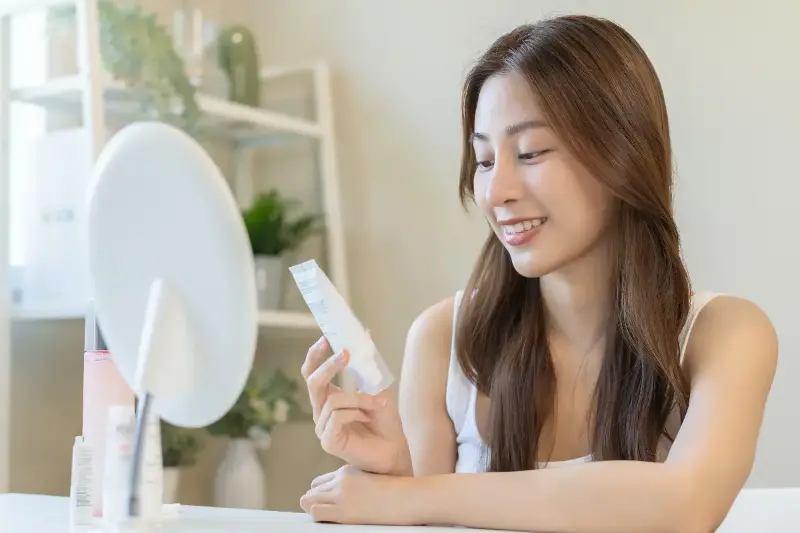If you walk along any beach in Southeast Asia or stroll through city streets on a sunny afternoon, you can’t help but notice people lathering up with sunscreen. Sun protection is essential in our region, where UV rays strike year-round. But have you ever paused to wonder what’s actually inside that creamy lotion? Or questioned whether your SPF is truly keeping you safe? Let’s look beyond the label for the real story on sunscreen ingredients, recent cancer controversies, and how to practise safer sun habits.

Decoding Sunscreen Ingredients: What’s Really In That Bottle?
Today’s sunscreens guard our skin thanks to two main types of filters: physical (also called mineral) and chemical. Physical sunscreens typically use zinc oxide or titanium dioxide. These minerals sit on your skin’s surface and reflect UV rays – think of them as tiny shields. Popular among those with sensitive skin, these ingredients rarely cause irritation, and recent studies suggest they’re unlikely to penetrate deeply into the body.
Chemical sunscreen ingredients, like oxybenzone, avobenzone, octinoxate, and homosalate, work differently. They absorb UV radiation, converting it into harmless heat. Chemical formulas are usually lightweight and invisible once applied. However, questions have been raised about whether some of these chemicals can be absorbed through the skin and into the bloodstream.
Interestingly, the US Food and Drug Administration (FDA) has called for further research into some chemical filters, after detecting low levels in blood samples. Current evidence does not suggest these trace amounts are harmful, but the agency wants to ensure long-term safety with more comprehensive studies.
Cancer Controversies: Myths, Fears, and Scientific Realities
If you keep up with wellness news, you’ve probably seen headlines shouting about sunscreen “causing cancer”, or posts accusing popular brands of toxic ingredients. The truth is, these claims are often based on laboratory or animal studies, not real-life use.
For instance, some chemical filters – like oxybenzone – have been found to disrupt hormones in lab settings when used in extremely high doses. But applying sunscreen as directed does not expose your body to these massive quantities. Furthermore, according to Cancer Research UK, there’s no solid scientific evidence that properly used sunscreen increases your risk of cancer. In fact, not using sun protection remains one of the leading causes of skin cancer worldwide.
The real controversy emerged when independent labs detected trace levels of benzene – a known carcinogen – in some sunscreen products. It’s important to note that benzene is not an intentional ingredient in any sunscreen, but rather a potential contaminant from manufacturing. Regulatory bodies acted quickly, issuing recalls and pushing companies to improve their processes. Most sunscreens on the market today undergo strict testing to prevent such contamination.

Safer Sun Habits: Tips For Smart Protection
While debates around ingredients grab headlines, dermatologists everywhere agree on one thing: skipping sun protection is far riskier to your health than any properly tested sunscreen. So, how do you make safer choices and form healthier habits?
-
Read The Label: Choose sunscreens that clearly list active ingredients. If you have sensitive skin or are concerned about absorption, mineral-based options like zinc oxide are a solid choice.
-
Go Broad-Spectrum: Always pick a sunscreen labelled "broad-spectrum", which protects against both UVA (ageing rays) and UVB (burning rays).
-
Mind Your Application: Most people apply too little. Adults need at least a shot-glass amount (about 30ml) to cover their body. Reapply every two hours, especially after swimming or sweating.
-
Don’t Solely Rely On Sunscreen: Combine sunscreen with hats, sunglasses, and protective clothing. Seek shade during peak sun hours (10am–4pm).
Remember that not all sun is bad – our bodies need sunlight to produce vitamin D. But in tropical Southeast Asia, a few minutes of unprotected exposure daily is all most people need for healthy levels.
Sunscreen Innovations: What’s New Under The Sun?
Global demand for safer, more effective sunscreens has triggered a wave of innovation. New-generation mineral sunscreens are now almost invisible, leaving behind far less “white cast” – a welcome improvement for all skin tones. Brands in Asia are leading the way with lightweight, sweat-resistant formulas that feel comfortable even in humid weather.
Scientists are also studying new natural UV blockers found in seaweed and plants, which could offer protection with minimal impact on sensitive skin and the environment. And don’t forget, sunscreen is just one part of the story: more people are embracing sun-safe habits, from UV-protective swimwear to wearable tech that alerts you when it’s time to reapply.
Sunscreen isn’t just a beach accessory – it’s essential for health and wellness in sunny Southeast Asia. Most ingredients are safe and effective, especially when used as directed. The real risk comes not from sunscreen itself, but from ignoring the sun’s power. So, make sun safety a habit, stay curious about what you’re putting on your skin, and enjoy a brighter, healthier future under the sun.
